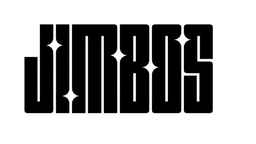Clay Bar vs. Clay Mitt: Which One Should You Use?
If you’ve ever run your hand across freshly washed paint and felt rough spots, you’ve likely heard you need to “clay” your car. But should you use a clay bar—or a clay mitt?
Both tools remove embedded contaminants and prep your paint for polish or ceramic protection—but they’re not the same. Let’s break it down.
What They Do (And Why It Matters)
Clay tools remove bonded contaminants—things that washing alone won’t fix. This includes:
- 🚧 Brake dust and rail dust
- 🌲 Tree sap and pollen
- 🏭 Industrial fallout
- 🧼 Mineral deposits
If you’re planning to apply Tough As Shell or polish with our upcoming Picture Perfect Polish, you need a clean, smooth surface—and claying is step one.
Option 1: Clay Bar
Best For: Precision work, sensitive paint, small areas, first-time users
Pros:
- ✔️ Extremely thorough and safe when used properly
- ✔️ Ideal for delicate or soft clear coat paint systems
- ✔️ More control in tight spots (mirrors, bumpers, emblems)
Cons:
- ❌ Slower to use (especially on larger vehicles)
- ❌ Drops = game over (clay bar must be tossed if it touches the ground)
Option 2: Clay Mitt
Best For: Speed, large panels, regular maintenance, experienced users
Pros:
- ✔️ Much faster—covers large areas quickly
- ✔️ Washable and reusable
- ✔️ Great for experienced users and regular claying
Cons:
- ❌ Slightly less forgiving on soft or delicate paint
- ❌ Harder to use on tight curves or small trim pieces
Which One Should You Choose?
| Use Case | Recommended Tool |
|---|---|
| First-time clay user | Clay Bar |
| Detailing a large SUV or truck | Clay Mitt |
| Quick maintenance claying | Clay Mitt |
| Working around badges & mirrors | Clay Bar |
| Very soft, sensitive paint | Clay Bar |
Pro Tip: Always Use Lubrication
No matter which you choose, never clay a dry surface. Use a clay lubricant or ceramic-safe soap like:
- The Super Soaper – High lubricity formula that works great for claying (Amazon)
Finish With Ceramic Protection
Once you’ve removed bonded contamination, protect the clean surface with a ceramic spray:
- Tough As Shell – Bonds cleanly to freshly clayed paint (Amazon)
Related Posts
Conclusion
Clay bars and clay mitts both get the job done—it’s about what fits your workflow best. Whether you’re a weekend warrior or a full-time pro, make sure claying is part of your routine before you polish or protect.
Pick your tool, prep with The Super Soaper, and finish with Tough As Shell for long-lasting results that actually stick.



